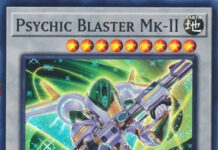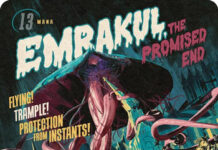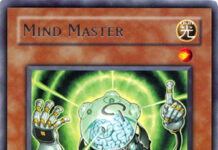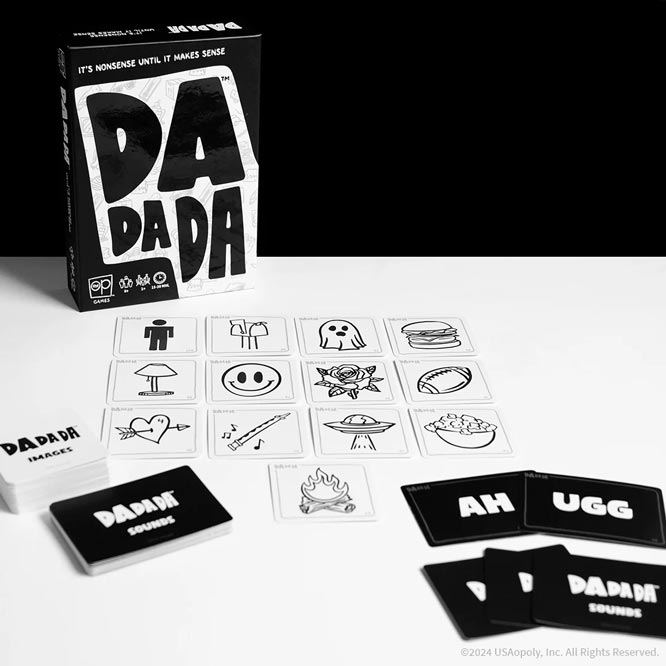
Dadada – A cooperative, strategic, deduction game with weird noises.
We recently got our hands on Dadada, and it is one of the strangest games we have ever played. It looks kind of nutso, but the game comes together brilliantly once you understand how to play it.
Dadada is a new game from The OP Games. It’s for 2+ people, ages 8 and up, and it plays in about 20-30 minutes.
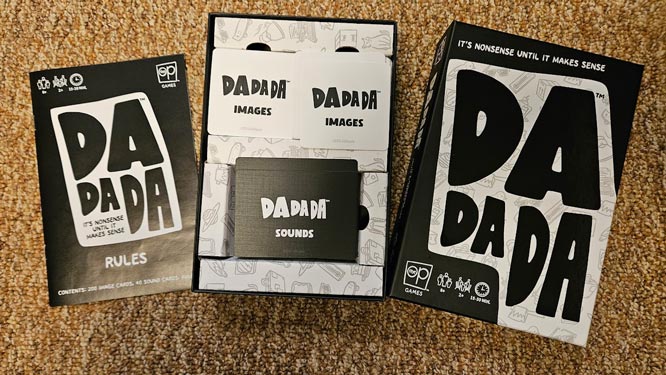
What’s in the box?
This is a relatively small box, that will travel well. The box is about 8″ x 5″ x 2″. The box holds:
- 40 Sound Cards
- 200 Image Cards
- 1 Rulebook
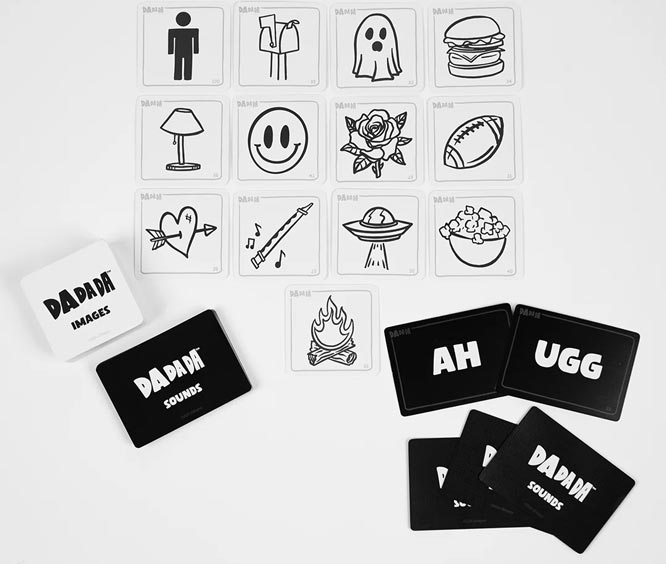
How to play Dadada
Phase 1 – Creation of your new language
The rules of the game are very simple. You draw 13 Image cards and 5 Sound cards. You flip over all 13 image cards, and 2 of the sound cards. Then … you cannot speak your native tongue anymore! You have to communicate using only the 2 sound cards you have flipped over. You can add the other 3 sounds during this early communication phase as well.
So … in the example image above, someone might put all the food items next to “Ah”, and anything with faces next to “Ugg”. And you point to each image and say “Ah” and “Ugg”, meaning food is Ah, and faces are Ugg. The group works together to associate a few cards with the available sounds. And everyone says the sounds, and agrees with a head nod yes or no. It’s extremely silly, but it works as communication. Then you might add in the other 3 sounds, and try to associate those sounds with the remainder of the images.
Here is another example of Phase 1 (Creation) from the Rulebook:
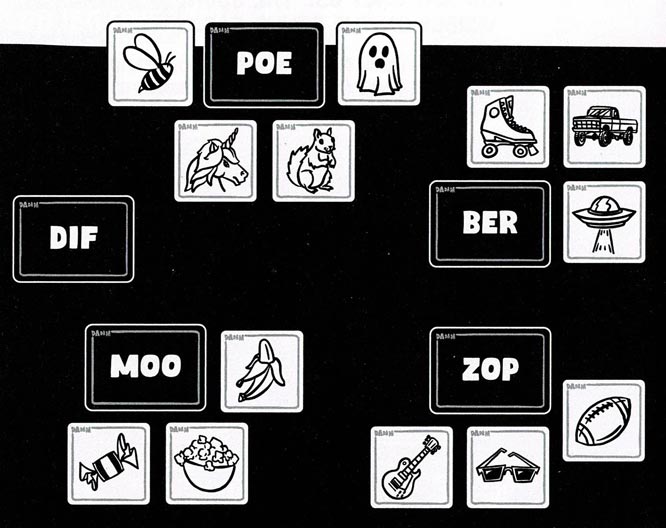
Phase 2 – Communication – Testing your new language
All players get a chance to be the Communicator. The communicator draws a new image, without showing it to the others. This is the card that the he/she must communicate to the group. The Communicator takes five more cards from the deck and then lays out all six cards on the table. The communicator tries to get the group to guess which card they picked from the card. The communicator can only use the sounds from the Creation Phase. The Communicator is allowed to combine sounds if they wish.

Once the guessers agree on a card, they all point to it. This signals the Communicator to acknowledge if the guessers are right or not.
In this example, the communicator was trying to get the guessers to point to the tire treads.
- If correct, you add the image to a “Defined Picture” pile. You score a point for all correct answers.
- If incorrect, add the card to a “Say What” pile. The game ends when there are two cards in the Say What pile.
- Discard the rest of the other 5 image cards that were dummies drawn by the communicator and the next player clockwise becomes the Communicator.
There is a scoring chart in the Rulebook to see how well you are doing.
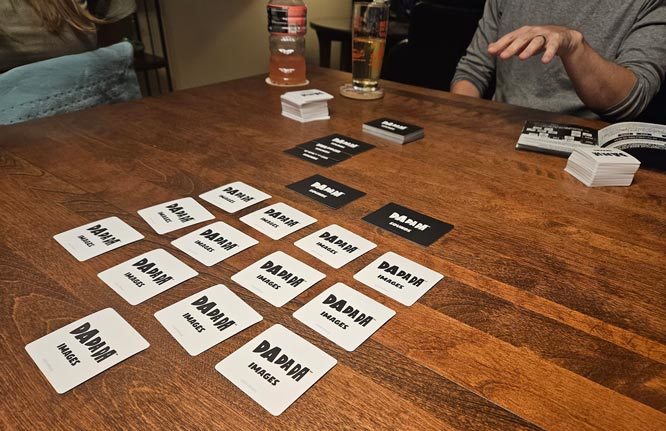
The Good:
- Easy to learn and teach.
- Quick gameplay. The game is over in 15-30 minutes.
- A great way to bond with your friends.
- Travel Sized. The box is small and travels well.
- Plays with small and large groups.
- Inexpensive – The game retails for $14.99
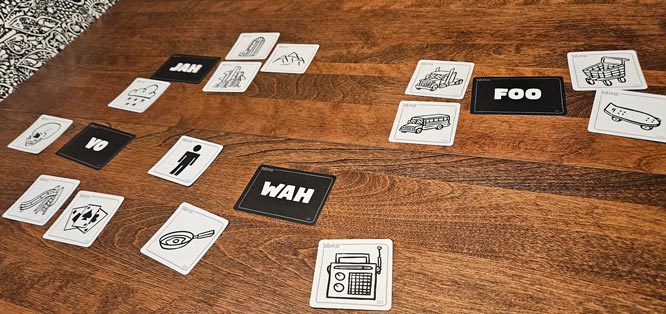
The Bad:
- This game is not a typical board game, and might not be every gamer’s cup of tea. Not everyone will buy into the gimmick here.
- Gets repetitive after multiple gameplays. One game per gaming session will probably be enough.
The Ugly:
- The look on your face when you realize your teammates have absolutely no idea what you’re trying to say.
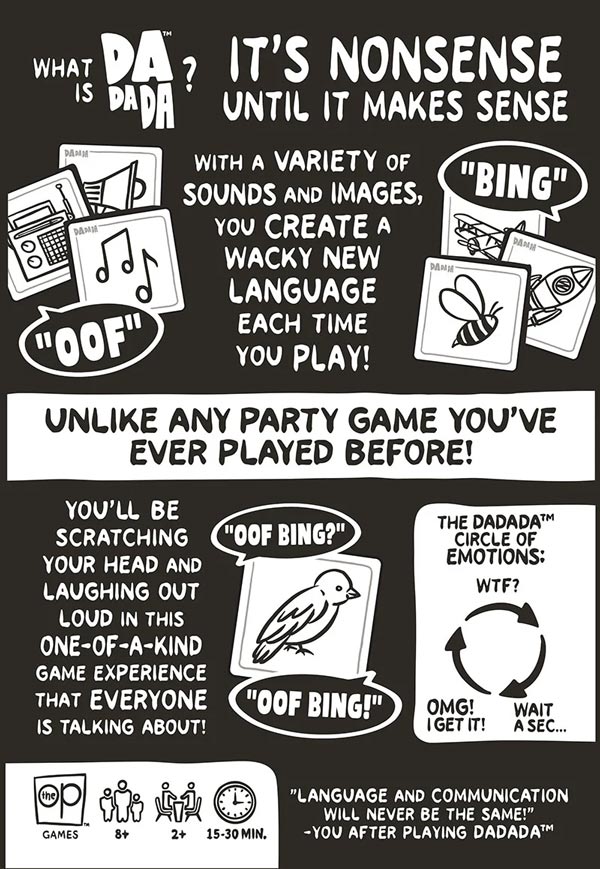
Final Thoughts
Overall, Dadada is a chaotic, hilarious mess of a game. We love that Dadada is simple to teach, and fits varying group sizes. It is hard to believe that you can play an entire game where you communicate simply by grunting 5 different noises. It doesn’t even really look like a game from the box, but it works!
Click here to check the current price on Amazon.com.
Pojo Note: I thought “Dadada” game name was reminiscent of the ESPN theme music, but my art-teacher-daughter informed that the title might come from the Dada art movement from 100 years ago – after World War I. The Dada movement consisted of artists who rejected the logic, reason, and aestheticism of modern capitalism, instead expressing nonsense, irrationality, and anti-bourgeois protest in their works.

